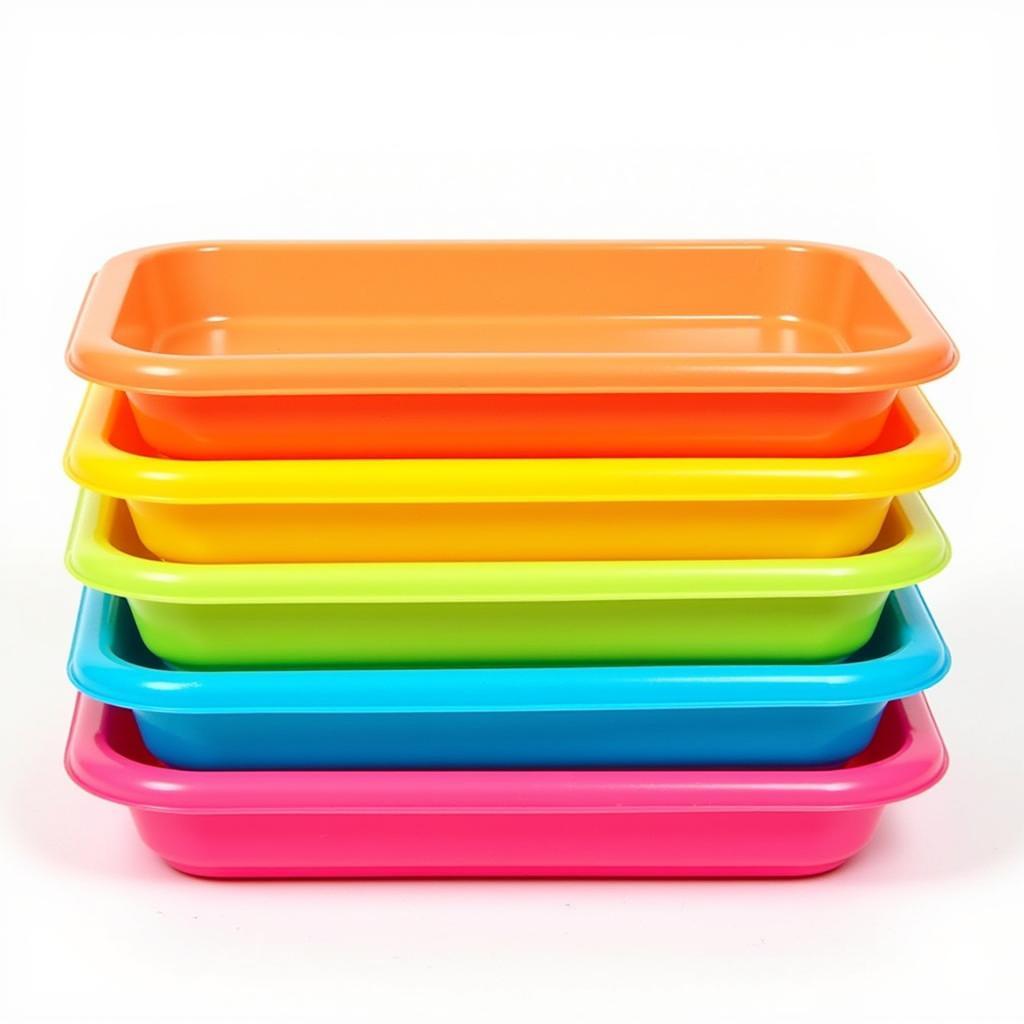Cafeteria Food Trays are a ubiquitous sight in schools, hospitals, and workplaces around the world. While often overlooked, these simple trays play a vital role in ensuring the smooth and efficient serving of meals to large numbers of people. But cafeteria food trays are more than just functional tools; they can also be a canvas for creativity, a source of nostalgia, and even a symbol of social interaction.
A History of the Humble Cafeteria Tray
The history of cafeteria food trays is intertwined with the evolution of mass dining itself. Early forms of trays, often made from wood or tin, were used in communal dining halls and military mess halls. However, the modern cafeteria tray as we know it emerged in the early 20th century alongside the rise of cafeterias and self-service restaurants. These new establishments needed a way to efficiently transport multiple food items, and the compartmentalized tray proved to be the perfect solution.
Materials and Designs: From Classic to Contemporary
Over the years, cafeteria food trays have been manufactured using a variety of materials, each with its own advantages and disadvantages:
-
Stainless steel: Known for its durability, ease of cleaning, and resistance to stains and odors, stainless steel remains a popular choice for cafeteria trays, especially in high-traffic environments.
-
Plastic: Lightweight and often more affordable than stainless steel, plastic trays offer versatility in design and color. However, they may be prone to scratching or staining over time.
-
Melamine: Combining the durability of plastic with a more refined aesthetic, melamine trays are often found in settings where presentation is key. They are also resistant to heat and chipping, making them suitable for hot food items.
Beyond Functionality: The Hidden Impact of Cafeteria Food Trays
While their primary purpose is practical, cafeteria food trays can also have a subtle yet significant impact on our dining experience.
-
Portion control: The size and compartments of a tray can influence how much food we take and ultimately consume.
-
Food presentation: A well-designed tray can make even the simplest cafeteria meal more appealing. Conversely, a cluttered or poorly organized tray can diminish the perceived quality of the food.
-
Socialization: Cafeteria trays can facilitate social interaction by providing a shared surface for conversations and meals. They can also serve as a visual cue for others to see what their peers are eating, potentially sparking discussions about food preferences.
Cafeteria Food Trays in Popular Culture
Cafeteria food trays have even made their way into popular culture, appearing in films, television shows, and even as art installations. These depictions often use the tray as a symbol of school life, institutional settings, or even societal norms.
Choosing the Right Cafeteria Food Tray for Your Needs
Selecting the ideal cafeteria food tray depends on several factors:
-
Volume of meals served: High-traffic cafeterias will benefit from durable stainless steel trays, while smaller establishments may opt for more economical plastic options.
-
Types of food served: Cafeterias serving hot or messy food items should consider trays with raised edges or deeper compartments to prevent spills.
-
Budget: Stainless steel trays are generally more expensive upfront but offer greater longevity, potentially saving costs in the long run.
-
Aesthetics: The design and color of the trays should align with the overall aesthetic of the cafeteria and the image you want to project.
 A stack of colorful, stackable cafeteria trays.
A stack of colorful, stackable cafeteria trays.
FAQs About Cafeteria Food Trays
Are cafeteria food trays dishwasher safe?
Most cafeteria food trays, especially those made from stainless steel or melamine, are dishwasher safe. However, it’s always best to check the manufacturer’s instructions.
How do you prevent food from sliding around on a cafeteria tray?
Some cafeteria trays feature non-slip surfaces or compartments with textured bottoms to keep food from moving.
Can cafeteria food trays be recycled?
The recyclability of cafeteria food trays depends on the material they are made from. Stainless steel and some types of plastic trays are recyclable. Check with your local recycling guidelines for more information.
Conclusion
Cafeteria food trays, despite their humble appearance, are essential components of efficient and effective mass dining. From their historical evolution to the impact they have on our dining experience, cafeteria food trays are more than meets the eye. Whether you’re outfitting a school cafeteria, a hospital dining hall, or a corporate break room, choosing the right cafeteria food trays can enhance both the functionality and the ambiance of your dining space.
Looking for high-quality, durable, and stylish cafeteria food trays? Check out our wide selection of organic baby food jars and hipp food to find the perfect options for your needs.